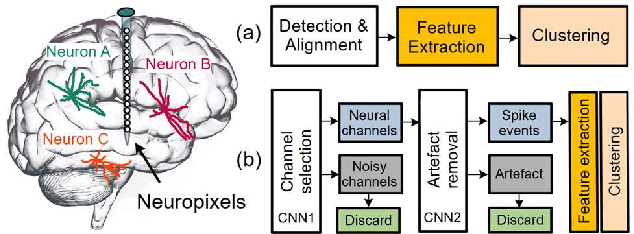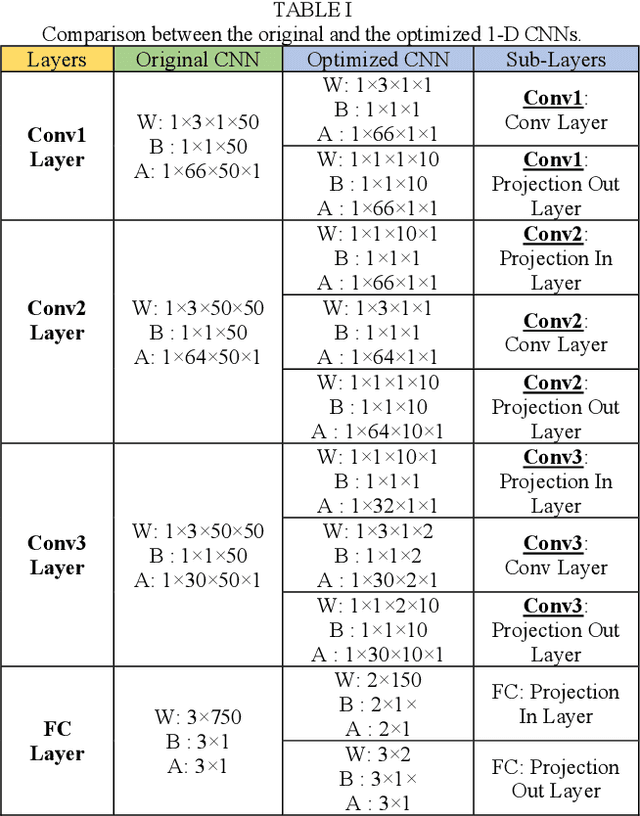Xiaoyu Jiang
Neighbour-Driven Gaussian Process Variational Autoencoders for Scalable Structured Latent Modelling
May 22, 2025Abstract:Gaussian Process (GP) Variational Autoencoders (VAEs) extend standard VAEs by replacing the fully factorised Gaussian prior with a GP prior, thereby capturing richer correlations among latent variables. However, performing exact GP inference in large-scale GPVAEs is computationally prohibitive, often forcing existing approaches to rely on restrictive kernel assumptions or large sets of inducing points. In this work, we propose a neighbour-driven approximation strategy that exploits local adjacencies in the latent space to achieve scalable GPVAE inference. By confining computations to the nearest neighbours of each data point, our method preserves essential latent dependencies, allowing more flexible kernel choices and mitigating the need for numerous inducing points. Through extensive experiments on tasks including representation learning, data imputation, and conditional generation, we demonstrate that our approach outperforms other GPVAE variants in both predictive performance and computational efficiency.
A Real-time and Hardware Efficient Artfecat-free Spike Sorting Using Deep Spike Detection
Apr 19, 2025



Abstract:Spike sorting is a valuable tool in understanding brain regions. It assigns detected spike waveforms to their origins, helping to research the mechanism of the human brain and the development of implantable brain-machine interfaces (iBMIs). The presence of noise and artefacts will adversely affect the efficacy of spike sorting. This paper proposes a framework for low-cost and real-time implementation of deep spike detection, which consists of two one-dimensional (1-D) convolutional neural network (CNN) model for channel selection and artefact removal. The framework utilizes simulation and hardware layers, and it applies several low-power techniques to optimise the implementation cost of a 1-D CNN model. A compact CNN model with 210 bytes memory size is achieved using structured pruning, network projection and quantization in the simulation layer. The hardware layer also accommodates various techniques including a customized multiply-accumulate (MAC) engine, novel fused layers in the convolution pipeline and proposing flexible resource allocation for a power-efficient and low-delay design. The optimized 1-D CNN significantly decreases both computational complexity and model size, with only a minimal reduction in accuracy. Classification of 1-D CNN on the Cyclone V 5CSEMA5F31C6 FPGA evaluation platform is accomplished in just 16.8 microseconds at a frequency of 2.5 MHz. The FPGA prototype achieves an accuracy rate of 97.14% on a standard dataset and operates with a power consumption of 2.67mW from a supply voltage of 1.1 volts. An accuracy of 95.05% is achieved with a power of 5.6mW when deep spike detection is implemented using two optimized 1-D CNNs on an FPGA board.
"I know myself better, but not really greatly": Using LLMs to Detect and Explain LLM-Generated Texts
Feb 18, 2025Abstract:Large language models (LLMs) have demonstrated impressive capabilities in generating human-like texts, but the potential misuse of such LLM-generated texts raises the need to distinguish between human-generated and LLM-generated content. This paper explores the detection and explanation capabilities of LLM-based detectors of LLM-generated texts, in the context of a binary classification task (human-generated texts vs LLM-generated texts) and a ternary classification task (human-generated texts, LLM-generated texts, and undecided). By evaluating on six close/open-source LLMs with different sizes, our findings reveal that while self-detection consistently outperforms cross-detection, i.e., LLMs can detect texts generated by themselves more accurately than those generated by other LLMs, the performance of self-detection is still far from ideal, indicating that further improvements are needed. We also show that extending the binary to the ternary classification task with a new class "Undecided" can enhance both detection accuracy and explanation quality, with improvements being statistically significant and consistent across all LLMs. We finally conducted comprehensive qualitative and quantitative analyses on the explanation errors, which are categorized into three types: reliance on inaccurate features (the most frequent error), hallucinations, and incorrect reasoning. These findings with our human-annotated dataset emphasize the need for further research into improving both self-detection and self-explanation, particularly to address overfitting issues that may hinder generalization.
DeepFilter: An Instrumental Baseline for Accurate and Efficient Process Monitoring
Jan 02, 2025



Abstract:Effective process monitoring is increasingly vital in industrial automation for ensuring operational safety, necessitating both high accuracy and efficiency. Although Transformers have demonstrated success in various fields, their canonical form based on the self-attention mechanism is inadequate for process monitoring due to two primary limitations: (1) the step-wise correlations captured by self-attention mechanism are difficult to capture discriminative patterns in monitoring logs due to the lacking semantics of each step, thus compromising accuracy; (2) the quadratic computational complexity of self-attention hampers efficiency. To address these issues, we propose DeepFilter, a Transformer-style framework for process monitoring. The core innovation is an efficient filtering layer that excel capturing long-term and periodic patterns with reduced complexity. Equipping with the global filtering layer, DeepFilter enhances both accuracy and efficiency, meeting the stringent demands of process monitoring. Experimental results on real-world process monitoring datasets validate DeepFilter's superiority in terms of accuracy and efficiency compared to existing state-of-the-art models.
Scalable Multi-Output Gaussian Processes with Stochastic Variational Inference
Jul 02, 2024Abstract:The Multi-Output Gaussian Process is is a popular tool for modelling data from multiple sources. A typical choice to build a covariance function for a MOGP is the Linear Model of Coregionalization (LMC) which parametrically models the covariance between outputs. The Latent Variable MOGP (LV-MOGP) generalises this idea by modelling the covariance between outputs using a kernel applied to latent variables, one per output, leading to a flexible MOGP model that allows efficient generalization to new outputs with few data points. Computational complexity in LV-MOGP grows linearly with the number of outputs, which makes it unsuitable for problems with a large number of outputs. In this paper, we propose a stochastic variational inference approach for the LV-MOGP that allows mini-batches for both inputs and outputs, making computational complexity per training iteration independent of the number of outputs.
Detecting Machine-Generated Texts: Not Just "AI vs Humans" and Explainability is Complicated
Jun 26, 2024



Abstract:As LLMs rapidly advance, increasing concerns arise regarding risks about actual authorship of texts we see online and in real world. The task of distinguishing LLM-authored texts is complicated by the nuanced and overlapping behaviors of both machines and humans. In this paper, we challenge the current practice of considering LLM-generated text detection a binary classification task of differentiating human from AI. Instead, we introduce a novel ternary text classification scheme, adding an "undecided" category for texts that could be attributed to either source, and we show that this new category is crucial to understand how to make the detection result more explainable to lay users. This research shifts the paradigm from merely classifying to explaining machine-generated texts, emphasizing need for detectors to provide clear and understandable explanations to users. Our study involves creating four new datasets comprised of texts from various LLMs and human authors. Based on new datasets, we performed binary classification tests to ascertain the most effective SOTA detection methods and identified SOTA LLMs capable of producing harder-to-detect texts. We constructed a new dataset of texts generated by two top-performing LLMs and human authors, and asked three human annotators to produce ternary labels with explanation notes. This dataset was used to investigate how three top-performing SOTA detectors behave in new ternary classification context. Our results highlight why "undecided" category is much needed from the viewpoint of explainability. Additionally, we conducted an analysis of explainability of the three best-performing detectors and the explanation notes of the human annotators, revealing insights about the complexity of explainable detection of machine-generated texts. Finally, we propose guidelines for developing future detection systems with improved explanatory power.
Rethinking the Diffusion Models for Numerical Tabular Data Imputation from the Perspective of Wasserstein Gradient Flow
Jun 22, 2024



Abstract:Diffusion models (DMs) have gained attention in Missing Data Imputation (MDI), but there remain two long-neglected issues to be addressed: (1). Inaccurate Imputation, which arises from inherently sample-diversification-pursuing generative process of DMs. (2). Difficult Training, which stems from intricate design required for the mask matrix in model training stage. To address these concerns within the realm of numerical tabular datasets, we introduce a novel principled approach termed Kernelized Negative Entropy-regularized Wasserstein gradient flow Imputation (KnewImp). Specifically, based on Wasserstein gradient flow (WGF) framework, we first prove that issue (1) stems from the cost functionals implicitly maximized in DM-based MDI are equivalent to the MDI's objective plus diversification-promoting non-negative terms. Based on this, we then design a novel cost functional with diversification-discouraging negative entropy and derive our KnewImp approach within WGF framework and reproducing kernel Hilbert space. After that, we prove that the imputation procedure of KnewImp can be derived from another cost functional related to the joint distribution, eliminating the need for the mask matrix and hence naturally addressing issue (2). Extensive experiments demonstrate that our proposed KnewImp approach significantly outperforms existing state-of-the-art methods.
Transcending Adversarial Perturbations: Manifold-Aided Adversarial Examples with Legitimate Semantics
Feb 05, 2024



Abstract:Deep neural networks were significantly vulnerable to adversarial examples manipulated by malicious tiny perturbations. Although most conventional adversarial attacks ensured the visual imperceptibility between adversarial examples and corresponding raw images by minimizing their geometric distance, these constraints on geometric distance led to limited attack transferability, inferior visual quality, and human-imperceptible interpretability. In this paper, we proposed a supervised semantic-transformation generative model to generate adversarial examples with real and legitimate semantics, wherein an unrestricted adversarial manifold containing continuous semantic variations was constructed for the first time to realize a legitimate transition from non-adversarial examples to adversarial ones. Comprehensive experiments on MNIST and industrial defect datasets showed that our adversarial examples not only exhibited better visual quality but also achieved superior attack transferability and more effective explanations for model vulnerabilities, indicating their great potential as generic adversarial examples. The code and pre-trained models were available at https://github.com/shuaili1027/MAELS.git.
S2vNTM: Semi-supervised vMF Neural Topic Modeling
Jul 06, 2023Abstract:Language model based methods are powerful techniques for text classification. However, the models have several shortcomings. (1) It is difficult to integrate human knowledge such as keywords. (2) It needs a lot of resources to train the models. (3) It relied on large text data to pretrain. In this paper, we propose Semi-Supervised vMF Neural Topic Modeling (S2vNTM) to overcome these difficulties. S2vNTM takes a few seed keywords as input for topics. S2vNTM leverages the pattern of keywords to identify potential topics, as well as optimize the quality of topics' keywords sets. Across a variety of datasets, S2vNTM outperforms existing semi-supervised topic modeling methods in classification accuracy with limited keywords provided. S2vNTM is at least twice as fast as baselines.
* 17 pages, 9 figures, ICLR Workshop 2023. arXiv admin note: text overlap with arXiv:2307.01226
KDSTM: Neural Semi-supervised Topic Modeling with Knowledge Distillation
Jul 04, 2023



Abstract:In text classification tasks, fine tuning pretrained language models like BERT and GPT-3 yields competitive accuracy; however, both methods require pretraining on large text datasets. In contrast, general topic modeling methods possess the advantage of analyzing documents to extract meaningful patterns of words without the need of pretraining. To leverage topic modeling's unsupervised insights extraction on text classification tasks, we develop the Knowledge Distillation Semi-supervised Topic Modeling (KDSTM). KDSTM requires no pretrained embeddings, few labeled documents and is efficient to train, making it ideal under resource constrained settings. Across a variety of datasets, our method outperforms existing supervised topic modeling methods in classification accuracy, robustness and efficiency and achieves similar performance compare to state of the art weakly supervised text classification methods.
* 12 pages, 4 figures, ICLR 2022 Workshop
 Add to Chrome
Add to Chrome Add to Firefox
Add to Firefox Add to Edge
Add to Edge